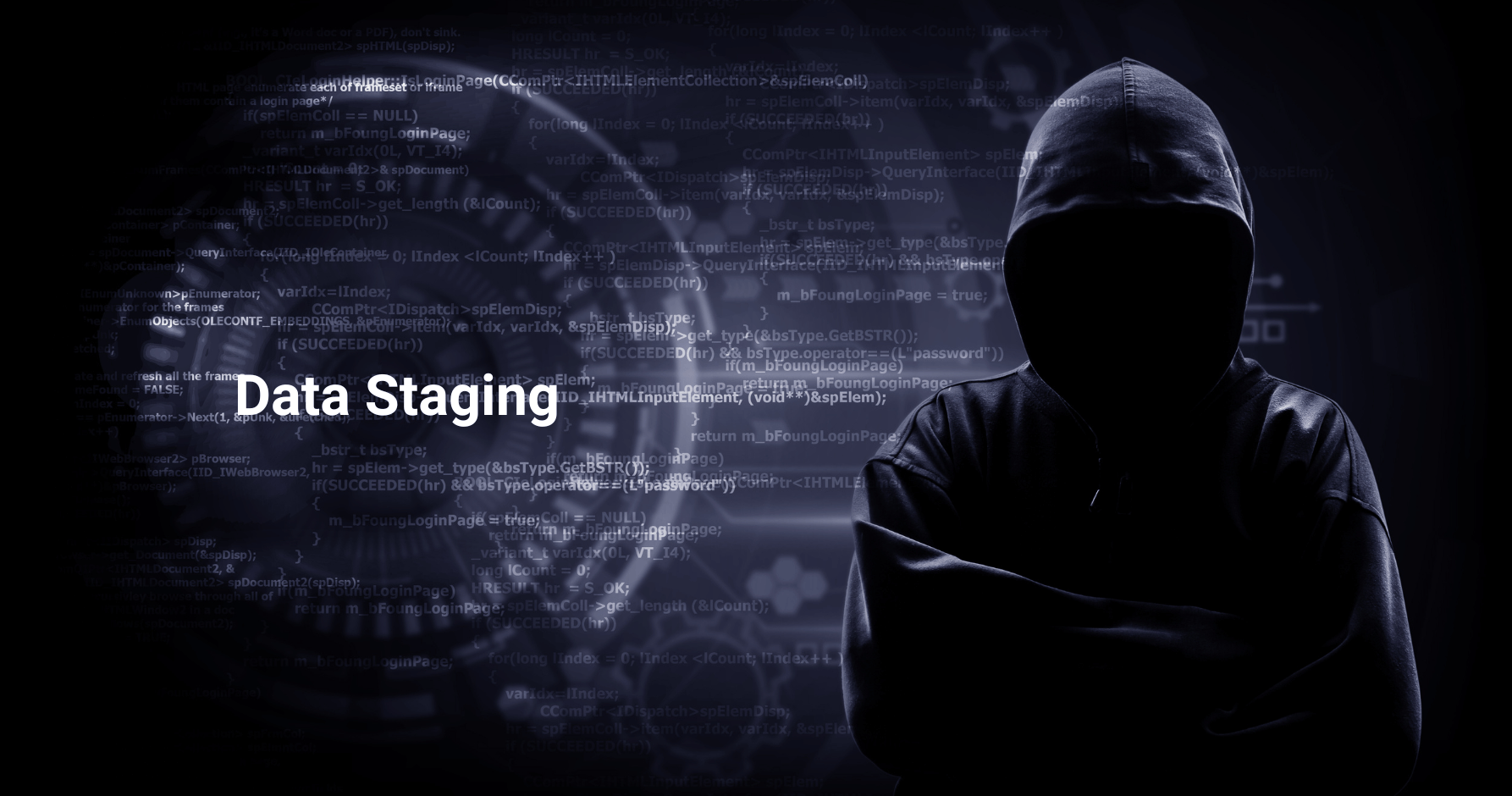“The NIST Cybersecurity Framework is a tool used to manage and mitigate cyber risks, guiding organizations of varying sizes and sectors, including small and medium-sized businesses.”
 Implementing NIST frameworks allows SMEs to establish a structured approach to enhance their security measures, including incident response plans and risk management, and develop a proactive approach to cybersecurity.
Implementing NIST frameworks allows SMEs to establish a structured approach to enhance their security measures, including incident response plans and risk management, and develop a proactive approach to cybersecurity.
This article, created by Managed Security Service Provider (MSSP) Forenova, details the value, challenges, and benefits that European Union (UN) small-to-medium enterprises (SMEs) gain by incorporating NIST frameworks into their cybersecurity strategy.
This excellent article will benefit SMEs wanting to align with the NIST security standards.
Overview of the NIST Cybersecurity Framework
 The NIST Cybersecurity Framework serves as guidance for private sector organizations engaged in critical infrastructure, outlining essential processes and controls for cybersecurity. This framework outlines fundamental processes and controls for organizations to implement.
The NIST Cybersecurity Framework serves as guidance for private sector organizations engaged in critical infrastructure, outlining essential processes and controls for cybersecurity. This framework outlines fundamental processes and controls for organizations to implement.
“The NIST CSF comprises five functions, 23 categories, and 108 subcategories. These subcategories represent desired outcomes and serve as the baseline for assessing an organization's achievement. Each subcategory statement is based on leading practices from informative references, which guide organizations in implementing practices to meet the Framework's desired outcomes.”
- The framework helps identify crucial activities for ensuring operational and service delivery integrity. It allows for investment prioritization and establishes a universal cybersecurity and risk management language within and outside the organization.
- The NIST CSF is a helpful tool for improving cybersecurity in US and EU organizations.
Why Have German Companies Embraced NIST Frameworks?
Germany's information security standards differ from those used in the US. Many German companies would like to merge the NIST and BSI security frameworks.
 Germany is adopting international security standards, including NIST, and moving towards automation and standardization. The NIST offers attractive aspects that Germany does not have. NIST’s Risk Management and CSF are constantly improving and tailored to different sectors to align well with German firms.
Germany is adopting international security standards, including NIST, and moving towards automation and standardization. The NIST offers attractive aspects that Germany does not have. NIST’s Risk Management and CSF are constantly improving and tailored to different sectors to align well with German firms.
Challenges Faced by EU SMEs in Cybersecurity
Europe has around 25 million SMEs, making it the largest single market in the world. SMEs are crucial for the EU economy. They makeup 99% of businesses, employ 100 million people, and contribute over half of Europe's GDP.
During increased risks and the shift to remote work, limited cybersecurity resources and a shortage of cyber skills can significantly affect SMEs' ability to compete.
Many small and medium-sized enterprises (SMEs) prioritized maintaining operations by quickly implementing systems to serve their customers during challenging times rather than focusing on enhancing security measures.
The highlight for SMEs in Germany has been the aggressiveness of EU members to go after hackers.
 On March 20, 2024, authorities seized digital assets and $102,107 in cryptocurrency in a joint effort by German, Lithuanian, and U.S. officials to catch cybercriminals. German authorities have shut down Nemesis Market, an illegal online marketplace selling drugs, stolen data, and cybercrime services.
On March 20, 2024, authorities seized digital assets and $102,107 in cryptocurrency in a joint effort by German, Lithuanian, and U.S. officials to catch cybercriminals. German authorities have shut down Nemesis Market, an illegal online marketplace selling drugs, stolen data, and cybercrime services.
“German law enforcement has a history of targeting underground marketplaces. “They recently shut down Kingdom Market and Crime Market, which offered money laundering and cybercrime services to thousands of users. German authorities are using forensic tools to penetrate the dark web's anonymity.
Benefits of Using the Framework for Cybersecurity
The NIST framework helps SMEs in several areas within their organizations. Implementing a NIST framework benefits cybersecurity, risk management, and compliance.
NIST delivers exceptional benefits to SMEs in the following ways:
- Improve the organization's overall cybersecurity posture and resilience.
- Reduce organizational risk through deploying security controls in a proven architecture.
- Adopting NIST SP 800-61 Rev. 3, organizations develop an optimal and effective incident response process and execution plan.
- Adopting a NIST framework shows to your customers, eco-system partners, and employees your commitment to a positive cybersecurity culture and the importance of protecting critical data.
The Cost Value of Deploying NIST Frameworks
A major compelling event for organizations when considering additional investments in cybersecurity revolves around reducing cost and complexity. Without leveraging frameworks like NIST 800-53 and ISO 27001, organization cybersecurity deployments become siloed and expensive. Organizations that piecemeal their cybersecurity deployments witness overlapping solutions and air-gap vulnerabilities within their enterprise environment.
 Air gaps in security protection often lead to exploits. The cost of these exploits reached $4.5 million per breach in 2023. Deploying NIST frameworks and moving away from ad hoc and tactical security control deployments helps organizations reduce the vulnerability of air gaps within their network, thus reducing the exposure to costly exploits.
Air gaps in security protection often lead to exploits. The cost of these exploits reached $4.5 million per breach in 2023. Deploying NIST frameworks and moving away from ad hoc and tactical security control deployments helps organizations reduce the vulnerability of air gaps within their network, thus reducing the exposure to costly exploits.
NIST Framework Lowers Cyber Insurance Premiums
According to the 2024 Healthcare Cybersecurity Benchmarking Study conducted by Censinet and KLAS Research in collaboration with the AHA, Health-ISAC, and Healthcare and Public Health Sector Coordinating Council, organizations that use the National Institute of Standards and Technology's Cybersecurity Framework as their primary framework experience a one-third decrease in growth of cyber insurance premium costs.
Are there Overlapping or Comparable Benefits Between NIST, GDPR, DORA, and NIS2?
“The NIST CSF framework provides best practice architecture and deployment guidelines to help protect organization data.” Many proven NIST frameworks help SMEs meet several EU compliance regulations, including GDPR, DORA, and NIS2.
NIST and the EU compliance mandates have some common interests and parallel objectives:
- All stress the importance of data security and privacy.
- Organizations are required to take proactive measures to protect data and ensure compliance.
- Organizations need to have policies and procedures in place to protect data.
- Organizations are required to monitor and audit their systems and processes to ensure compliance.
- Organizations must report data breaches and take measures to mitigate the risk.
- Organizations must provide staff with training and awareness of data security and privacy.
Risk Management.
GDPR, DORA, and NIS2 highlight the importance of risk management, specifically in cybersecurity, ICT, and critical entity resilience. NIST frameworks help organizations lower their risk by protecting attack surfaces more efficiently.
Incident Reporting.
GDPR, DORA, and NIS2 each mandate incident reporting within their specific areas, potentially simplifying procedures for entities within their scope. NIST frameworks stress the importance of proper monitoring and reporting.
Data Protection Measures.
GDPR, DORA, and NIS2 data protection principles can work alongside cybersecurity measures to improve overall data security. NIST frameworks support healthcare, financial services, and governments to help protect data.
Challenges and Considerations When Adopting NIST in the EU
The NIST Cybersecurity Framework Version 2.0 is necessary to standardize cybersecurity practices globally and promote international cooperation in cyber defense. These frameworks offer a wide range of guidelines, principles, and practices to assist organizations in managing cybersecurity risks. It is adaptable across different sectors and organizations.
However, NIST frameworks lack updated standards and controls in the following areas:
- NIST needs to develop more frameworks leveraging cloud security capabilities. NIST still has several controls for the on-premises deployments.
- NIST should prioritize phasing out Role-Based access control (RBAC) and adopting Zero-trust architectures in the NIST 800-53 framework.
- Support for multi-tenancy for access and hybrid cloud deployments.
Bridging NIST and EU Cyber Resilience Act Together
The EU Cyber Resilience Act introduces regulatory requirements that focus on the cybersecurity of digital products. Based on their cybersecurity risk levels, products are categorized into Class I, II, and unclassified or default, each with specific compliance obligations.
Both initiatives stress the importance of cybersecurity risk management and proactive security measures, promoting a "security by design" approach and emphasizing continuous vulnerability management and effective incident response.
The NIST Framework and the EU Cyber Resilience Act work together to enhance global cybersecurity resilience by balancing voluntary guidelines and mandatory requirements.
How Do SMEs Deploy NIST Frameworks?
The NIST Cybersecurity Framework offers tools to help small businesses assess their cybersecurity maturity level and develop a cybersecurity program that aligns with their risk management strategy and business requirements.
Adapting NIST frameworks for small businesses requires tailoring practices to their needs, considering factors like company size, data management, and resources. SMEs should customize guidelines to establish a practical cybersecurity program that doesn't hinder daily operations.
Here are reference links from NIST to help SMEs with their implementation.
Resource guide
NIST is broken down into three components. These components give SMEs the first basic introduction to the various frameworks. These components include:
- Core
- Profiles
- Tier for Implementation
Small Business Implementation Guide
“The CSF 2.0 organizes cybersecurity outcomes into six high-level Functions: Govern, Identify, Protect, Detect, Respond, and Recover.”
NIST is broken down into five functions:
Identity
The Identify Function assists organizations in managing cybersecurity risks by analyzing their crucial assets, data, and capabilities and prioritizing risks according to business requirements.
Protect
The Protect Function is designed to continuously provide crucial infrastructure services by containing or minimizing the effects of potential cybersecurity incidents.
Detect
The Detect Function provides guidelines for identifying cybersecurity events and ensuring prompt discovery.
Respond
The Respond Function addresses the effectiveness of cybersecurity incidents and response capabilities, including automation, reporting, and remediation.
Recover
The Recover Function should assist in resilience plans by restoring affected capabilities or services after a cybersecurity incident, aiming to reduce impact and enable a prompt return to regular operations.
Leveraging Tiers
Four tiers, from Partial to Adaptive, represent the evolution from reactive to proactive cybersecurity approaches. Small businesses can use these tiers to evaluate their current practices and plan for future enhancements.
Conclusion
NIST framework helps prioritize cybersecurity activities, assess risks, and communicate essential protection measures to management and other departments.
However, NIST does not guide the improvement of cybersecurity in SMEs. Some believe executives may not prioritize cybersecurity due to a lack of awareness of cyber threats. This mindset aligns with research showing behavioral factors affect IT risk management effectiveness. Yet, SMEs can improve their cybersecurity by following the NIST CSF 2.0 framework, which helps address current needs and build long-term resilience against cyber threats.
Why Forenova Security for Cybersecurity Services?
Aligning NIST to meet your EU compliance requirements is worth the investment by your firm. Our cybersecurity teams can help align your business and objectives to the proper NIST framework to help protect your data.
Forenova Security is a leading provider of Managed Detection and Response. For organizations seeking a partner to augment their current security operations (SecOps) team or provide complete 24/7 monitoring and response, threat intelligence, and other cyber defense tools, Forenova Security has access to experienced engineers to meet their business and compliance goals.
CTA:
Contact us today to discuss your cybersecurity compliance and operational management needs.


.svg)

.svg)
.svg)
 Implementing NIST frameworks allows SMEs to establish a structured approach to enhance their security measures, including incident response plans and risk management, and develop a proactive approach to cybersecurity.
Implementing NIST frameworks allows SMEs to establish a structured approach to enhance their security measures, including incident response plans and risk management, and develop a proactive approach to cybersecurity. The NIST Cybersecurity Framework serves as guidance for private sector organizations engaged in critical infrastructure, outlining essential processes and controls for cybersecurity. This framework outlines fundamental processes and controls for organizations to implement.
The NIST Cybersecurity Framework serves as guidance for private sector organizations engaged in critical infrastructure, outlining essential processes and controls for cybersecurity. This framework outlines fundamental processes and controls for organizations to implement. Germany is adopting international security standards, including NIST, and moving towards automation and standardization. The NIST offers attractive aspects that Germany does not have. NIST’s Risk Management and CSF are constantly improving and tailored to different sectors to align well with German firms.
Germany is adopting international security standards, including NIST, and moving towards automation and standardization. The NIST offers attractive aspects that Germany does not have. NIST’s Risk Management and CSF are constantly improving and tailored to different sectors to align well with German firms. On March 20,
On March 20, Air gaps in security protection often lead to exploits. The cost of these exploits reached
Air gaps in security protection often lead to exploits. The cost of these exploits reached 



